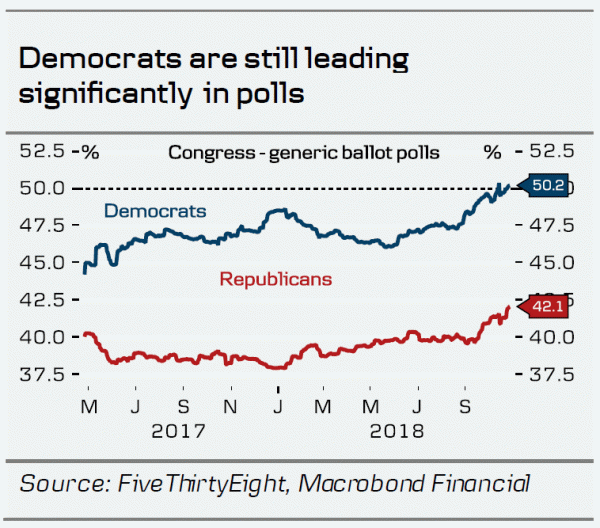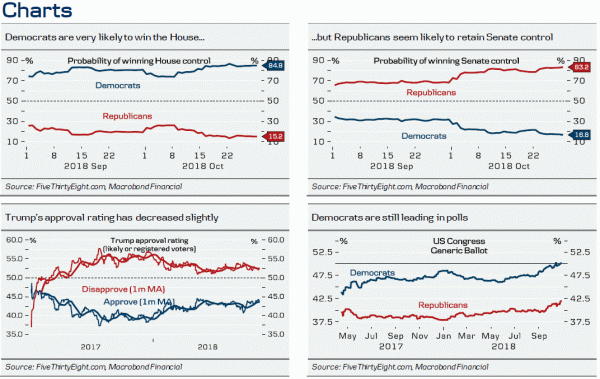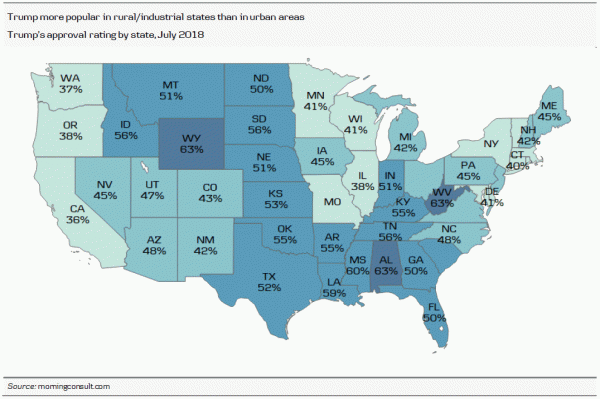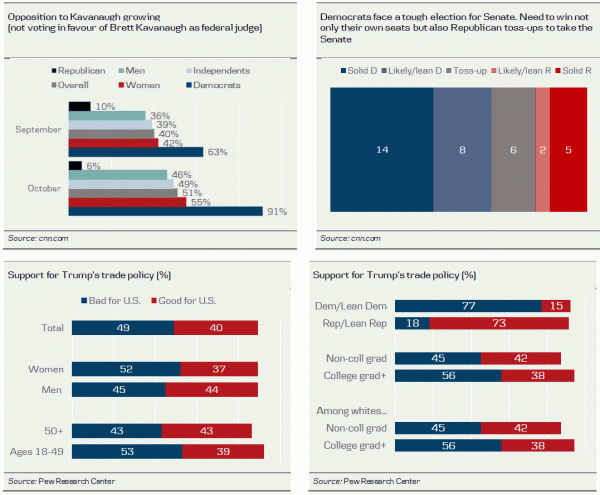Election Day is fast approaching and opinion polls continue to look good for the Democrats. Still, FiveThirtyEight models indicate a divided Congress as there is an 85% probability that the Democrats will win the majority in the House. In the Senate, things look less promising for the Democrats, as the Republicans have an 83% probability of retaking the Senate. Trump’s approval rating continues in the 40-45% range but a majority still disapprove of him.
Polling averages from 24 October show that the Democrats have gained ground in the Obama-Trump states. Trump won six states that Obama had carried in 2012 and five of them are featured in the Senate race. Overall, these states (FL, MI, OH, PA and WI) now show strong Democratic support. We do not expect this to affect the outcome of the mid-terms as the Democrats face a tough Senate map given that few Republican seats are in play. Still, it clearly points to a Democratic-leaning environment, and it seems that the Democrats continue to gain popularity. Polls indicate that 50% want to vote Democratic (against 42% Republican).
Last week, Trump continued criticising the Fed for raising interest rates. Over the past couple of months, he has given a number of reasons why he does not support its monetary policy decisions. For instance, he wants a weaker dollar to increase US exports, which he believes would help trade negotiations. Last week, the FOMC minutes did not give any indication that the Fed is listening to Trump’s critique and we expect it to continue its hiking cycle until the 3% neutral rate is reached.
Last week, Trump proposed a 10% tax cut for the middle classes, which appeared to come as a surprise for congressional leaders and some White House officials. The tax law, which Republicans passed last year, has not boosted their popularity, at least not yet. On the contrary, the tax plan has been criticised for benefiting only the wealthy and not the middle classes. Trump announced that the tax plan would come into effect this year, which several congressional leaders have indicated is ‘highly unlikely’. Trump has stated that a ‘resolution’ regarding the tax cut would be introduced at ‘the end of the week or early next week’, which will be interesting to follow.
We expect a divided US Congress after the mid-terms, which means that Trump would be unable to push his domestic policy agenda through. Therefore, in our view, the mid-term elections should have limited implications for markets and the economy.
In the unlikely scenario that the Republicans retake both chambers, it would give Trump confidence to push even harder towards the America that he wants. If Republicans retake both chambers, they have another shot at passing new laws together with Trump, not least trying to make a tax reform 2.0.


















